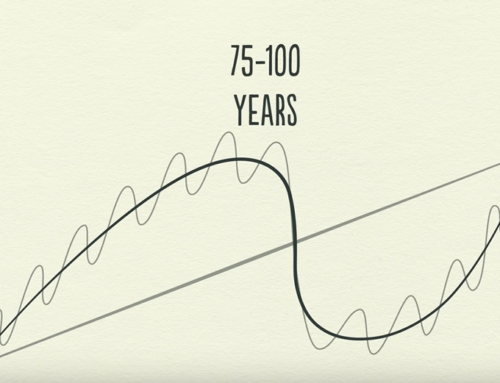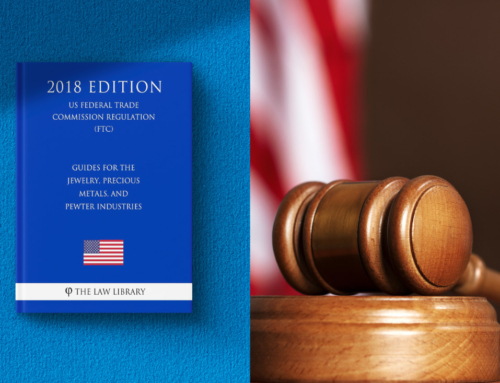Beginning around now, a 10% tariff is going to be charged on some of your new purchases.
The impacts of tariffs include:
- Increased Cost of Goods, but only on some items
- This is a Tax
- How Suppliers Invoice Tariffs
- Stock Balancing Merchandise
- Impact on Merchandising
- Impact on Marketing
- Country of Origin Tactics
- Switching Suppliers / Country of Origin
- A Non-Tariff Future
- An Uber-Tariffed Future
1. Increased Cost of Goods, but Only on Some Items
Unlike shipping, which we prefer to show as a line item expense and not allocated to each item, the tariffs may show up as an increase to each item’s cost. There are a couple of reasons why tariffs may be treated differently. a) Some of your supplier’s merchandise may be manufactured in China, but not all, therefore only Chinese items may come in with an increase. b) Unlike gold increases, the tariff cost will be easier to spot as a percent on your supplier’s landed cost, which they may not want to make so transparent. c) The future value of the inventory, once tariffs are removed, will be lower.
2. This is a Tax
Tariffs are taxes paid by the importer when the merchandise clears customs. The tariff would be paid by the importer’s broker, the same way other import duties are paid. The tariff is then passed on to you, in some form or another (increase by item, or as a line item on your invoice) by your supplier. Retailers do not get to show this as a tax paid and expense it as such. While tariffs are indeed a tax, they will show up as an increase in the cost of those goods to the retailer.
3. How Suppliers Invoice Tariffs
Suppliers will pay a 10% (as of now) tariff on the cost of the merchandise they import. For example, they bring in a ring that cost them $1,100, which would, incur a $110 tariff. Let’s say they would normally sell this wholesale for $1,500 which would give them a 27% GP. Now, however, that same ring actually cost them $1,210 including the tariff.
If they just pass along the $110 tariff, the wholesale cost of this ring would increase to $1,610. This sounds easy enough, but then their GP goes down (to 25%) since their COGS went up. A decline of 2% may not sound like a lot, but suppliers work on thin margins and each point has an impact on the company. Also, the supplier typically uses a bank to finance their receivables and as costs go up, so does the carrying costs. Yes, they make the same $400 Gross Profit, but on a higher sell price which will negatively impact their overall gross profit for the year.
4. Stock Balancing Merchandise
Perhaps the snarkiest issue is going to show itself a year from now when some of the goods you receive this fall are selected to be returned to your suppliers via stock-balancing. Let’s assume for a moment that after January 2021 there is a new administration or at least the issue of Chinese tariffs have been removed. The item you intended to buy for $1,100, but paid $1,210 for, is selected to be returned to the vendor. Will your supplier allow the price you paid when you stock balance, or the price without the tariff? Will your vendors be able to take a 10% off the top hit on the value of these items if they were to take it back from you with the tariff, but then sell it to someone else without it? It’s going to be an issue to be aware of.
5. Impact on Merchandising
Merchandisers have a different problem. When the tariff is built into their costs, the item would be marked up including the tariff, which will have an impact on the perceived value of that item. Key retail price points, say $995 or $1,995, are going to require different merchandise, whether that merchandise is sourced from outside of China or are replaced by lower cost items. In my earlier example, the wholesale price went from $1,500 to $1,610 due to the $110 tariff. It’s pretty easy to settle in on a $2,995 retail price when the ring costs $1,500, but now there’s a choice to make. Continue to sell it for $2,995, mark it to $3,195 or move on to a different style. These choices may sound easy but there are items that sell over and over again at a known price. With gold increases, and now tariffs, merchandisers are having to scramble to keep up with their style selections.
6. Impact on Marketing
Merchandise that has been selected for Q4 advertising won’t have the same costs as was expected when the items were priced out earlier this year. Your advertised prices will either have to change, or you may just remove the retail prices all together. And it’s not just the tariff – it’s the increasing gold price and then the tariff on top of that! Planning advertising around product/price just got a lot harder.
7. Country of Origin Tactics
I have no doubt that some of the merchandise being manufactured in China will be imported via other countries. How difficult will it be to ship a box to India, Vietnam or Thailand, put a tag on it that the goods were manufactured in those countries and then ship it on to the US? Good luck with that one.
8. Switching Suppliers / Country of Origin
Savvy buyers may already be moving to other suppliers who are manufacturing their goods, especially basic merchandise, outside of China. Are your manufacturers sourcing goods from other markets? Are they looking to manufacture in the US again? These are valid questions for retailers, manufacturers & wholesalers.
9. A Non-Tariff Future
At some point in the future, we presume these tariffs will disappear. The merchandise you will have purchased between now and then will have had tariffs paid, but the value of that inventory is going to decrease. Replacement inventory is going to cost you less and then you’ll have to decide if you’re going to leave that merchandise at their tariffed retail prices or lower them.
10. An Uber-Tariffed Future
Until now we’ve been addressing a 10% tariff on Chinese goods and I’ve brought up a number of issues that this will impact. But what happens if the trade war continues to escalate and we face 25% tariffs next year. And then other countries get involved, like India and Thailand – or why stop with only some countries, heck, let’s charge a 25% tariff on everything not made in the USA! Tariffs will result in inflation as more costs are passed on to the consumer. Let’s hope the rest of the world doesn’t get involved and things settle down sooner rather than later.







